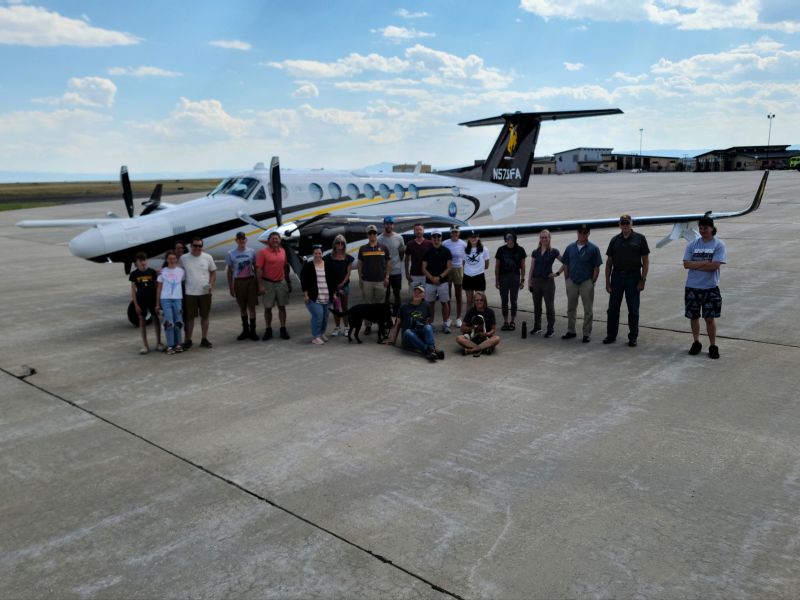The newly updated U.S. National Science Foundation (NSF) University of Wyoming (UW) King Air Research Aircraft (King Air) is set to fly its first research mission in the summer of 2025.
The university is hosting an open house on Sept. 24 to celebrate this upcoming milestone, at the Donald L. Veal Research Flight Center. On Friday, Sept. 27, the university will host a public ribbon cutting.
"The renovated aircraft will be a remarkable asset to the atmospheric sciences community," said Anne Johansen, the NSF division director for Atmospheric and Geospace Sciences. "Not only does it demonstrate our strong partnership with the University of Wyoming, but it also enables new and creative approaches to educating and training scientists and engineers."
The aircraft has new and upgraded equipment and sensors to explore atmospheric chemistry, cloud physics, aerosol dynamics, air quality and energy exchange between the surface of the Earth and its lower atmosphere.
The first research mission for the NSF UW King Air will take place in Salt Lake City in the summer of 2025. The Salt Lake City Summer Ozone Study will investigate the formation of ozone over the Salt Lake Valley during summer.

To make this new aircraft possible, NSF provided funding through an NSF Mid-Scale Research Infrastructure award to UW that totaled $15.7 million. About $7 million from that funding went into building and acquiring research infrastructure and new instruments for the plane.
The aircraft is managed under a cooperative agreement with UW. NSF invested about $8.9 million into the design, installation and certification of the new aircraft, and UW invested approximately $4.5 million into the baseline aircraft, along with the new avionics suite of instruments.
"The upgrade includes everything from cabling to racks; physical instruments, such as new lidars; upgrades to existing radars; and acquisition of new atmospheric chemistry and aerosol equipment," Jeff French, a professor at UW, said in the university press release.
Since 1987, NSF UW King Air has been supported and funded through a series of cooperative agreements between UW and NSF. This will continue with the new research aircraft; UW will receive nearly $3 million annually through its cooperative agreement to maintain the aircraft.






